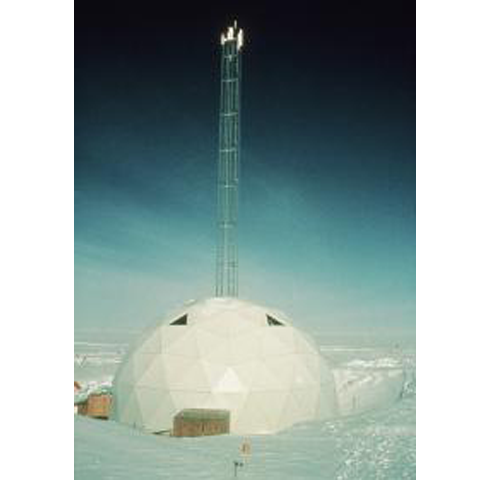Science news
3-Jun-2008 00:00 Eastern US Time
Cool bacteria
Scientists have discovered a new species of bacteria that has been buried in a Greenland glacier for 120,000 years. Incredibly the bacteria are still alive.
They have been recovered from ice-cores taken from two miles beneath the surface of the glacier. Extreme cold, high pressure and practically no food or oxygen have failed to kill the micro-organisms.
So this makes them very valuable for studying how life can survive in extreme environments - both here on Earth and in other parts of the solar system.
Research team
The research is presented today by Jennifer Loveland-Curtze at the 108th American Society for Microbiology General Meeting in Boston, Massachusetts. She is senior research associate in the laboratory led by Jean Brenchley, professor of biochemistry and molecular biology at Penn State University. The research team also includes senior research associate Vanya Miteva.
Small but hardy
The new species is one of the ultra-small bacteria that have puzzled scientists for years. These are so tiny that they pass through microbiological filters. Some species have even been found living in the highly purified water used for dialysis.
"Ultra-small cells could be unknown contaminants in media and medical solutions that are thought to have been sterilised using filters," said Loveland-Curtze.
The size of the new species helped it to survive for so long in the harsh conditions of the Greenland glacier. "Small microbial cell size is considered to be advantageous for more efficient nutrient uptake in oligotrophic conditions," write the scientists. This is because with small size comes "larger surface-to-volume ratio, protection against predators and occupation of microenvironments".
Cell science
Chryseobacterium greenlandensis is related genetically to types of bacteria found in fish, marine mud and the roots of some plants. It is one of only about 10 scientifically described new species discovered in polar ice and glaciers.
To study the bacteria in the laboratory the research team filtered out the cells from the melted ice. They then incubated them in cold, solutions that had no oxygen and very few nutrients. The final steps were to study the genes, the physiology, the biochemistry and the structure of the bacteria.
World of microbes
The research team have demonstrated that this painstaking procedure works for elusive micro-organisms. So it can now be used to learn much more about them - "their metabolic properties and mechanisms for long-term survival under extreme conditions."
Microbes form a third or more of the Earth's biomass, said Loveland-Curtze. "Yet fewer than 8,000 microbes have been described out of the approximately 3,000,000 that are presumed to exist."
"The description of this one species is a significant step in the overall endeavour to discover, cultivate and use the special features of these organisms."
More help with words
| atom | bacteria | biology | breed | cell |
| chemistry | circulation | complex | conception | digestion |
| DNA | dissolved | element | energy | environments |
| experiments | fertile | fertilisation | genes | inherit |
| membrane | metabolism | microbiology | micron | microscopic |
| molecules | nutrients | particle | protein | protoplasm |
| respiration | organisms | viruses | volume |
What's it all about?
- In which country have the bacteria been found?
- How long have they been in the ice?
- How deep in the ice were they found?
- The story mentions four things that make it hard to live so deep in the ice. State three of them.
- Extreme environments are found on Earth. Where else are they found?
- Ultra-small bacteria have been found before in surprising places. Name one.
- What does the small size of the bacteria help them to do in the glacier?
- The scientists give several reasons for this. State one.
- Are new bacteria often found in polar ice and glaciers?
- Count the different steps in the procedure that are listed in the story.
- In practice there will be even more steps that are not mentioned here. So one of the most important findings of this work is that the whole painstaking procedure actually -----.
- What will it now be used for?
- Only 8000 of the different species of microbes on earth have been studied in detail - that's only about 0.03%. Why do you think we know so little about the microbe world?
- Explain in your own words what "discover, cultivate and use the special features of these organisms" means.
- What would you like to do next if you were part of this research team?


